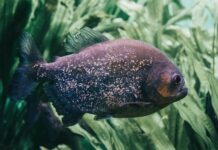In part one of this 3-part instructional we pointed out that some canine behaviors are ingrained, while others are learned. We also highlighted successful ways to control excessive barking. In part 2 we will deal with effective techniques to stop biting.
Canine Behavior Problems: Biting
According to the U.S. Disease Control Center in Atlanta, Georgia, about 1,000,000 people in the United States are bitten by dogs every year. The majority of victims are children between the ages of 5 and 8; in most cases, the biting dogs were house pets.
Dogs bite for a variety of reasons. Dogs may bite or display threatening behavior when they are angry, afraid, agitated, over-excited, or when challenged or seeking to protect.
The first thing to do when confronted with biting dogs is to discern “why” the dog behaved aggressively. If the dog was being teased or felt threatened, the problem may not be with the dog. Instead, fault may lie with whomever or whatever teased him or made him feel threatened.
Some dogs bite or snap at their caregiver’s hands when the caregiver tries to take something away from them. According to Barbara Woodhouse, internationally known dog trainer, canine behavior expert, and author of Barbara Woodhouse’s Encyclopedia of Dogs & Puppies, the best cure for such aggressive behavior is to “return violence with violence.”
Effective Ways to Stop Biting Dogs
When the dog attempts to bite, the caregiver should act swiftly by suspending the dog off his front legs by his choke chain; at the same time, scold in a violent tone of voice, “No bite!” The dog should be allowed back on his front legs only after he shows signs of discomfort (usually within 10 seconds). Once subdued; caress and praise him.
This process should be repeated every time the dog attempts to bite; he must be forced to respect your authority. While this type correction may sound cruel, it is not. Curing the dog of biting using this means is much kinder than having the dog sentenced to death in the gas chamber because of injuries inflicted on someone he bit.
Inexperienced caregivers may have a difficult time correcting their dog this way; if that is the case, the help of an expert dog trainer should be sought.
Preventing Aggressive Behavior in Dogs that Leads to Biting
Some dogs are so naturally protective of their owner they attack anyone who approaches, without being given a command. This can be quite dangerous. Allowing a dog to lunge toward people could very well lead to other aggressive behaviors, such as biting.
One of the best methods to prevent this type aggressive behavior in dogs is to take the dog among crowds – muzzled if necessary. Get people to touch him (muzzled), and give him a sound scolding if he attempts to attack.
Another effective method is to get someone who trains dogs to snatch him from you and really shake him (by his choke chain) when he shows signs of vicious behavior. He must be defeated, and then praised for submitting.
What About Puppies that Bite?
Puppies are notorious for biting and nipping during play. One mistake people often make with puppies that bite is to let them get away with it. Caregivers often think such behavior is cute and believe the puppy will naturally grow out of it without intervention. The reality is that such “innocent” biting and nipping can become a learned bad habit, difficult to break once the puppy is older.
Caregivers should address nipping and biting early on, instead of waiting until the puppy has grown and the problem more difficult to correct. Puppies are not like children; they are growing dogs. And dogs need training and an understanding but firm, consistent hand to teach them what is acceptable and what is not. Correction methods for young puppies that bite are different than methods for grown dogs.
How to Handle Aggressive Behavior in Puppies
When a puppy bites hard enough to hurt he must be corrected firmly. Say “No bite!” in a firm tone. If that doesn’t work, use what is called “the shakedown method,” which resembles what the mother dog does to her pup to keep order in the litter. Shake the puppy by catching hold of the loose skin of its neck on both sides under the ears. Repeat “No bite!”
Correcting aggressive behavior in puppies older than 12 weeks is done the following way: grab the puppy by the scruff of the neck with both hands, and lift him off his front feet, if necessary. Make the puppy look you straight in the face, and repeat “No bite!” If you sound angry enough, the puppy will understand.
This correction method must be consistent. If you permit a puppy to bite one time, but get annoyed and correct him the next, the puppy will become confused and will not learn effectively.
Puppies are especially likely to bite or nip children who play with them either for too long a period, or are too rough with them. When a puppy shows signs of being tired of being “mauled” during play, it is time to let the puppy rest. Put the puppy away in his box or pen, and instruct others to leave him alone and let him rest.
Under no circumstances slap a puppy or dog’s nose to discipline him; this is cruel, as well as ineffective. And always give plenty of love and praise for submissive behavior after correction has been administered.
At Savvy Dog Lover, we care about you and your pet. In part 3 of this 3-part instructional we discuss the problem of jumping. Read part 3, “How to Prevent Dogs and Puppies from Jumping up on People” at Savvy Dog Lover, www.savvy-dog-lovers.com.
©2006 Lori S. Anton
Savvy Dog Lover editor




















